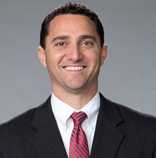25 Jan Many CT Scans Can Be Avoided During ER Evaluation of Head Trauma
MedicalResearch.com Interview with:
Adam L. Sharp MD MS
Research Scientist/Emergency Physician
Kaiser Permanente Southern California
Kaiser Permanente Research
Department of Research & Evaluation
Pasadena, CA 91101
MedicalResearch.com: What is the background for this study?
Response: Millions of head computed tomography (CT) scans are ordered annually in U.S. emergency Departments (EDs), but the extent of avoidable imaging is poorly defined. Ensuring appropriate use is important to ensure patient outcomes and limited resources are optimized. A large number of stake holders have highlighted the need to reduce “unnecessary” CT scanning as part of their recommendations for the Choosing Wisely campaign. However, despite calls for improved stewardship, the extent of avoidable CT use among adults with minor trauma in community EDs is not known.
The Canadian CT Head Rule (CCHR) is perhaps the most studied of many validated decision instruments designed to assist providers in evaluating patients with minor head trauma. This study aims to describe the scope of overuse of CT imaging by ED providers in cases where application of the CCHR could have avoided imaging.
Secondarily, we sought to describe the extent to which avoidable CTs, if averted, would have resulted in “missed” intracranial hemorrhages requiring a neurosurgical intervention.
MedicalResearch.com: What are the main findings?
Response: Among 27,240 adult trauma head CTs, EHR data classified 11,432 (42.0%) discordant with CCHR recommendation. Subsequent chart review showed that the designation of discordance based on the EHR was inaccurate in 12.2% (95% CI 5.6-18.8%). Thus, we estimate that 36.8% of trauma head CTs were truly avoidable (95% CI 34.1-39.6%). Among the likely avoidable CT group, only 0.1% (n=13) received a neurosurgical intervention. Chart review showed none of these were actually “missed” by the CCHR, as all 13 were misclassified.
MedicalResearch.com: What should readers take away from your report?
1.) CT use can be avoided for many patients during ED evaluation after head trauma if the Canadian CT Head Rule were applied
2.) Application of this rule is very unlikely to miss important injuries or impair patient outcomes
3.) An EHR may be able to identify avoidable CT imaging with reasonable margins of error
MedicalResearch.com: What recommendations do you have for future research as a result of this study?
Response: Our work emphasizes the need for generalizable strategies to better implement best practices. In the case of our work, the effect of an intervention to implement the CCHR should be evaluated to understand the effect on patient care and CT use.
MedicalResearch.com: Is there anything else you would like to add?
Response: National guidelines and recommendations, such as the Choosing Wisely Campaign, require evaluation to assure recommendations are applied in routine care. Research funding and investigation should evaluate the impact of implementation interventions on resource use and patient outcomes.
Any disclosures? No disclosures
MedicalResearch.com: Thank you for your contribution to the MedicalResearch.com community.
Citation:
Computed Tomography Use for Adults With Head Injury: Describing Likely Avoidable Emergency Department Imaging Based on the Canadian CT Head Rule
Academic Emergency Medicine 2017;24:22–30
Note: Content is Not intended as medical advice. Please consult your health care provider regarding your specific medical condition and questions.
More Medical Research Interviews on MedicalResearch.com
[wysija_form id=”5″]
Last Updated on January 25, 2017 by Marie Benz MD FAAD

